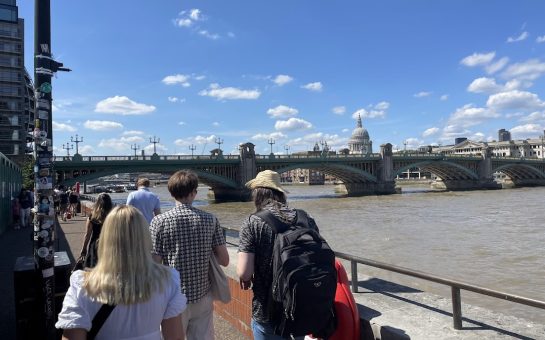Separation and Silence explores the different experiences of prisoners and the public’s changing views on crime and punishment.

Prisoners’ perspective of life inside Wandsworth prison is examined in a new exhibition currently showing at Wandsworth Museum.
Marking the 160year anniversary of the UK’s largest prison, Separation and Silence explores the different experiences of prisoners over time, the role of prisons in society, and the public’s changing views on crime and punishment.
One half of the exhibition showcases the prison’s Victorian era of corrective punishment, and the other displays recent artistic works created by prisoners.
Photographs produced as a result of Inside Eye, a project of the 1990s in which prisoners were taught how to take professional photographs, give an interesting insight into life inside.
Exhibition designer and creator, Tatiana Chierici, said this look into the life of inmates is the most revealing part of the exhibition.
She said: “People are not generally aware of what is going on inside prisons and do not think about prisoners achieving something they can be proud of. The exhibition gives a human angle to prisoners which people do not usually see.
“Rehabilitation should be the main purpose of prison and I believe this can happen through mediums such as art. It gives prisoners a mode of expression which they wouldn’t otherwise have and allows them to continue using their brains.”
Ex-prisoner Kris Allan participated in Inside Eye and is now working as a professional photographer. He said the project gave him a purpose in prison.
“If society is not offering any sort of positivity to offenders to give them a chance to change the direction of their lives, then offenders leave prison and ultimately create more victims,” he explained.
Separation and Silence highlights the use of capital punishment, with an original execution box from the 1920s and the prison’s noose on display.
Information about notable inmates including Oscar Wilde, Ronnie Kray and Ronnie Biggs is also showcased.
Wandsworth Prison voluntary worker Bryan Burgess, who helps prisoners with drug and alcohol addictions, said the exhibition is fascinating.
He explained: “I see hope as it shows we are slowly moving forward from the punishment of the Victorian age to a greater acceptance of prisoners as human beings today.
“We must take responsibility for our actions, but the period of time for which this occurs in prison should be used differently than it is. Prison to a degree does not work.”
Mr Burgess said high reoffending rates suggest a change is needed.
He added: “The prison system is old in its thinking. It locks prisoners away, hoping for the best, but offenders are sometimes leaving prison in a worse state than when they went in.
“Seeing how long prisoners are locked in their cells for each day has shocked me. Leaving a man with his own head is a cruel punishment.”
Wandsworth Prison Officer, Stewart Mclaughlin, said there are many educational and vocational training courses available at the prison today, including bricklaying, journalism and catering.
He said: “Rehabilitation does present itself in the prison system, but imprisonment is also a punishment.
“All the work put into rehabilitation can often be undone by the lack of support or understanding when prisoners are released. Society must be part of the rehabilitation process.
“Wandsworth prison is proud of this exhibition as it declares a long period of public service. The prison has had a role in war and peace and has carried out its function to the best of its ability with the resources it has been given.”
Separation and Silence is at Wandsworth Museum until 31 December.




